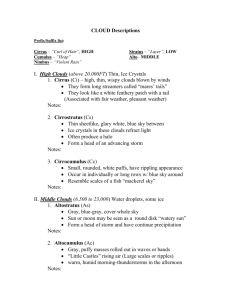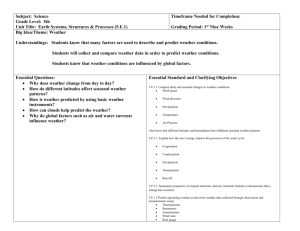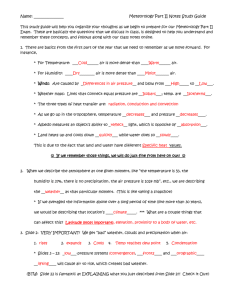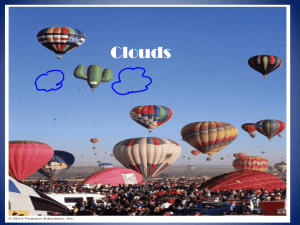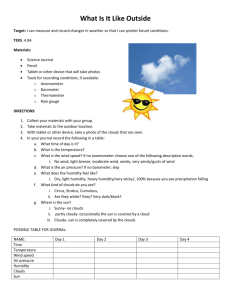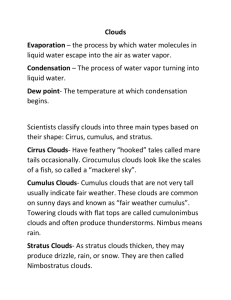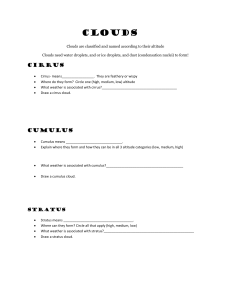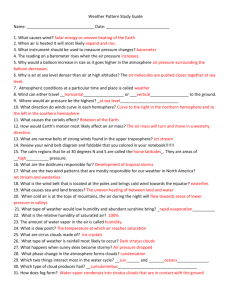Name: Meteorology Part II Notes Study Guide This study guide will
advertisement
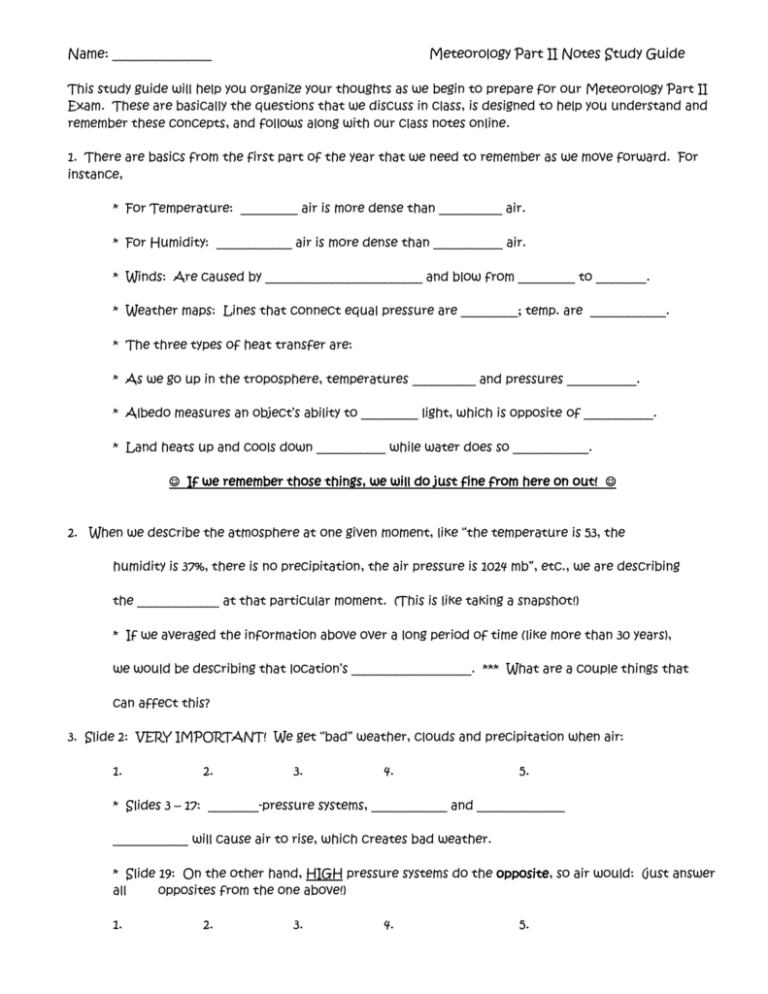
Name: _______________ Meteorology Part II Notes Study Guide This study guide will help you organize your thoughts as we begin to prepare for our Meteorology Part II Exam. These are basically the questions that we discuss in class, is designed to help you understand and remember these concepts, and follows along with our class notes online. 1. There are basics from the first part of the year that we need to remember as we move forward. For instance, * For Temperature: _________ air is more dense than __________ air. * For Humidity: ____________ air is more dense than ___________ air. * Winds: Are caused by _________________________ and blow from _________ to ________. * Weather maps: Lines that connect equal pressure are _________; temp. are ____________. * The three types of heat transfer are: * As we go up in the troposphere, temperatures __________ and pressures ___________. * Albedo measures an object’s ability to _________ light, which is opposite of ___________. * Land heats up and cools down ___________ while water does so ____________. If we remember those things, we will do just fine from here on out! 2. When we describe the atmosphere at one given moment, like “the temperature is 53, the humidity is 37%, there is no precipitation, the air pressure is 1024 mb”, etc., we are describing the _____________ at that particular moment. (This is like taking a snapshot!) * If we averaged the information above over a long period of time (like more than 30 years), we would be describing that location’s ___________________. *** What are a couple things that can affect this? 3. Slide 2: VERY IMPORTANT! We get “bad” weather, clouds and precipitation when air: 1. 2. 3. 4. 5. * Slides 3 – 17: ________-pressure systems, ____________ and ______________ ____________ will cause air to rise, which creates bad weather. * Slide 19: On the other hand, HIGH pressure systems do the opposite, so air would: (just answer all opposites from the one above!) 1. 2. 3. 4. 5. (BTW: Slide 22 is fantastic at EXPLAINING what you just described from Slide 2!!! Check it Out!) Now let’s make sure we get it. * Why would we expect “bad” weather near the low-pressure systems? * We would expect “_______” weather near high-pressure systems because air is ________. * Where on a weather map would we expect strong surface winds? And why would we choose that location? * Looking at a weather map, where do we “look” to predict tomorrow’s weather patterns that will affect us over the next couple days? The global wind known as the _________ _______ separates __________ air masses of the south from _____________ air masses from the north in the U.S. Slides 22-26: What are the three things we need to make a cloud? (in a bottle OR the atmosphere) Slide 24: On the outside of this cup, the air is losing kinetic energy making it cooler. * If it loses enough energy, the ______________ of the air will reach the ______________ and water vapor from the air will ________________ on the outside of the cup. (It’ll “sweat”). * This all happened because ______ air can’t hold as much moisture as _______ air. Slides 27 – 42: Now that we have made all that condensation, we can look at the clouds that form! *Look outside RIGHT NOW!!! What type of cloud do you see? Explain what it looks like. * Cirrus: Describe how you are going to remember how cirrus clouds look. * Where do they form in the sky? And what temperatures must be present for them to form? * Stratus: Describe how you are going to remember how stratus clouds look. * Where do they form in the sky? And what temperatures must be present for them to form? * Cumulus: Describe how you are going to remember how cumulus clouds look. * Where do they form in the sky? And what temperatures must be present for them to form? Rain Clouds: What do we call cumulus clouds that produce precipitation? What do we call stratus clouds that produce precipitation? What do we call cirrus clouds that produce precipitation? (be careful!) Now. If you can do this worksheet and study the questions and answers from our severe weather PPT and from your hurricane project, your Meteo. II test will be a “breeze” (pun intended).
